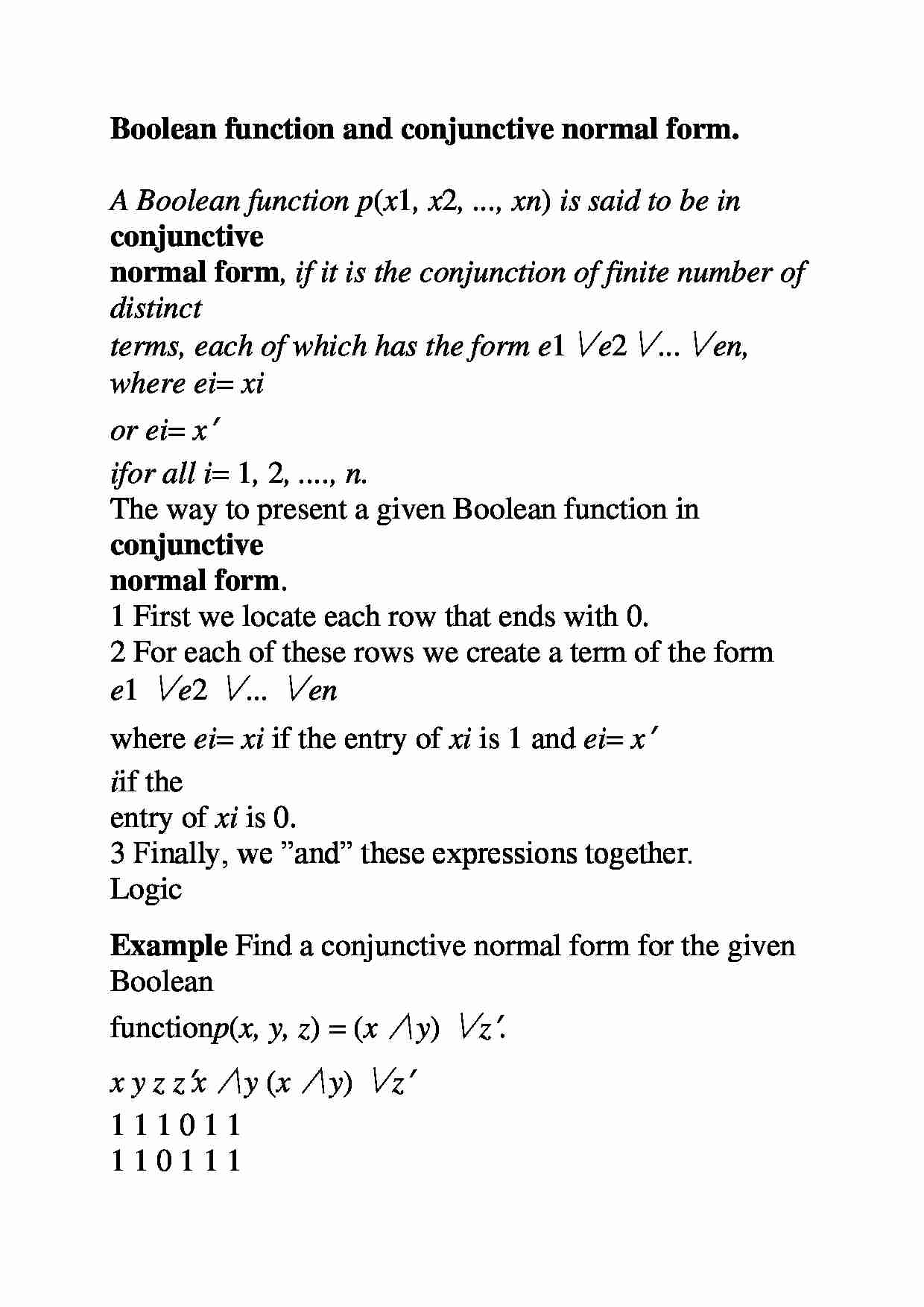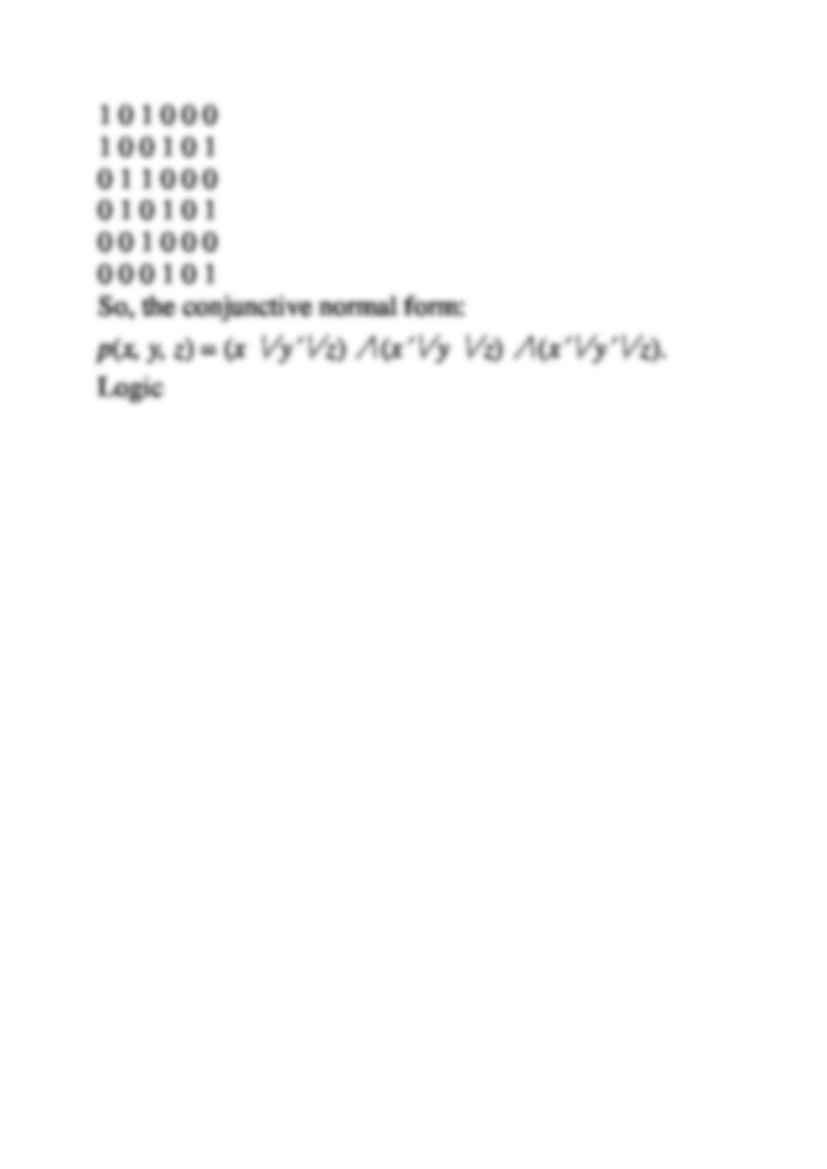To tylko jedna z 2 stron tej notatki. Zaloguj się aby zobaczyć ten dokument.
Zobacz
całą notatkę


Boolean function and conjunctive normal form. A Boolean function p ( x 1 , x 2 , ..., x n ) is said to be in conjunctive normal form , if it is the conjunction of finite number of distinct terms, each of which has the form e 1 ∨ e 2 ∨ ... ∨ e n , where e i = x i or e i = x ′ i for all i = 1 , 2 , ...., n. The way to present a given Boolean function in conjunctive normal form . 1 First we locate each row that ends with 0. 2 For each of these rows we create a term of the form e 1 ∨ e 2 ∨ ... ∨ e n where e i = x i if the entry of x i is 1 and e i = x ′ i if the entry of x i is 0. 3 Finally, we ”and” these expressions together. Logic Example Find a conjunctive normal form for the given Boolean function p ( x, y, z ) = ( x ∧ y ) ∨ z ′ . x y z z ′ x ∧ y ( x ∧ y ) ∨ z ′ 1 1 1 0 1 1 1 1 0 1 1 1 1 0 1 0 0 0 1 0 0 1 0 1 0 1 1 0 0 0 0 1 0 1 0 1 0 0 1 0 0 0 0 0 0 1 0 1 So, the conjunctive normal form: p ( x, y, z ) = ( x ∨ y ′ ∨ z ) ∧ ( x ′ ∨ y ∨ z ) ∧ ( x ′ ∨ y ′ ∨ z ) . Logic
... zobacz całą notatkę




Komentarze użytkowników (0)